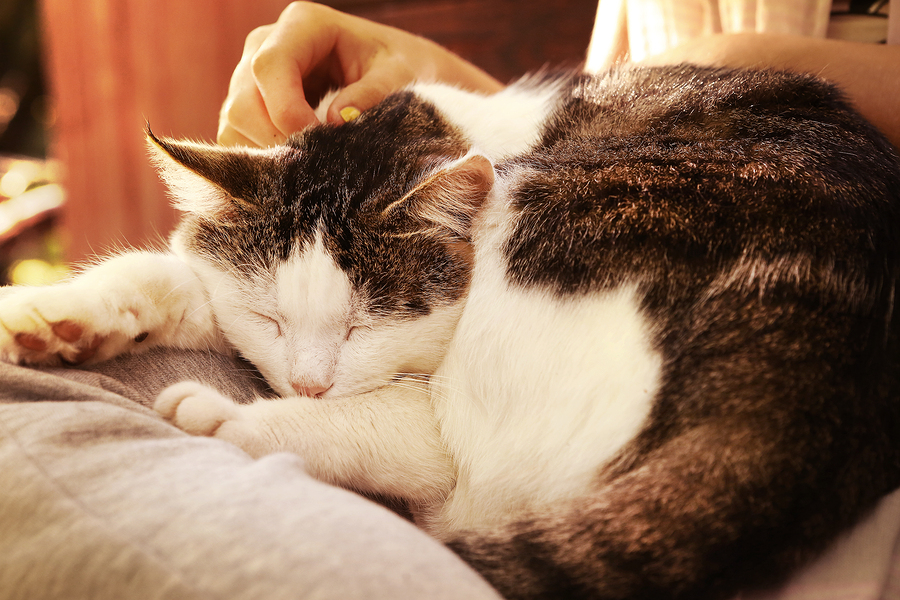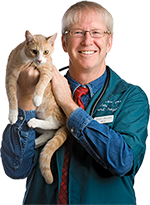Why do cats blissfully paw and push at us when we’re petting them? Here’s what I told a reader who asked.
Q: Why do cats like to knead their paws on our skin? Does it have a purpose?
A: One of the great colloquialisms of our language is the phrase “making biscuits,” used to describe that exact feline behavior. It’s especially appropriate when applied to a cat with white paws — as if she’s coated them in flour before setting to work kneading the sticky dough.
But cats aren’t imitating our baking habits. Their habit of reflexively pushing their paws in and out on a soft surface such as a lap or blanket is a sign of contentment, one that is linked to a cat’s earliest experience: snuggling against mom cat and suckling her warm flow of milk. (Fun fact: Within two or three days of birth, each kitten chooses his or her own personal nipple, and, with rare exceptions, drinks only from that one.)
The kneading behavior is present at birth. Pressing against the nipples is how newborns stimulate milk production. Even after they are weaned, throughout their lives, cats revisit that behavior. It’s a signal that they are relaxed and happy. Cats also knead at other important phases of their life. For instance, females knead in advance of the mating process.
Cats are extremely sensitive to touch, especially in the area of their paws (maybe that’s why they don’t always enjoy having them handled). Cats who knead humans are delivering an extra-special message of love. Humans who have the magic touch (and a cat’s favor) can induce kneading behavior by petting a cat in her favorite spot, such as between the eyes or ears. If you are lucky, your cat will keep her claws retracted as she kneads your skin, giving you a fancy feline massage.
Read more, including all about dog camps, in this week’s Pet Connection!


